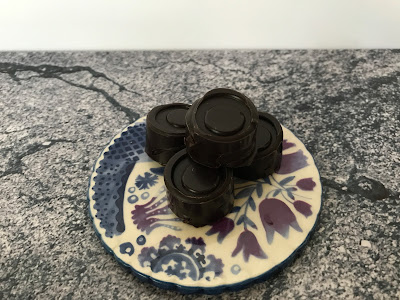Pour l’orzo, j’ai utilisé un produit de marque Banza vendu comme un remplacement de riz (mais c’est clairement une pâte). Et pour les poitrines de poulet, ces temps-ci, je prends toujours celles qui sont sans la peau, sans les os et coupées en deux sur le sens de la longueur.
Pour les poitrines de poulet bruschetta
3 tomates, coupées en morceaux (ou 1 ½ tasse de tomates cerises multicolores coupées en 2)
1 gousse d’ail, hachée finement
2 c. à thé de vinaigre balsamique
3 c. à thé d’huile d’olive extra-vierge
5 ou 6 poitrines de poulet
6 tranches de fromage mozzarella frais sans lactose
¼ tasse de basilic frais haché
sel et poivre, au goût
Préchauffer le four à 350 °F.
Dans un bol, mélanger les tomates, l’ail, le vinaigre et 1 cuillère à thé de l’huile. Saler et poivrer, puis réserver.
Saler et poivrer les poitrines de poulet. Dans un grand poêlon, chauffer le reste de l’huile à feu moyen-vif. Ajouter le poulet et cuire 4 minutes ou jusqu’à ce qu’il soit doré (le retourner à mi-cuisson). Retirer le poêlon du feu et déposer le poulet sur une plaque de cuisson munie de rebords, huilée.
Garnir les poitrines de poulet du fromage mozzarella et de la moitié bruschetta de tomates réservée. Cuire au four pendant 10 minutes ou jusqu’à ce que le poulet ait perdu sa teinte rosée à l’intérieur. Pendant ce temps, mélanger le basilic à la bruschetta restante.
Au moment de servir, parsemer le poulet de la bruschetta crue et servir avec de l’orzo au citron.
Pour l’orzo au citron
8 oz. d’orzo (voir note plus haut)
1 c. à thé de beurre sans lactose
2 c. à thé de zeste de citron râpé
2 c. à soupe de jus de citron
3 c. à soupe de persil italien frais, haché
sel et poivre
Dans une grande casserole d’eau bouillante salée, cuire l’orzo de 6 à 8 minutes ou jusqu’à ce qu’il soit al dente. Égoutter les pâtes, en réservant ½ tasse de l’eau de cuisson, et les mettre dans un bol. Ajouter le beurre, le zeste et le jus de citron, le persil et l’eau de cuisson réservée. Mélanger pour bien enrober les pâtes. Saler et poivrer.






























